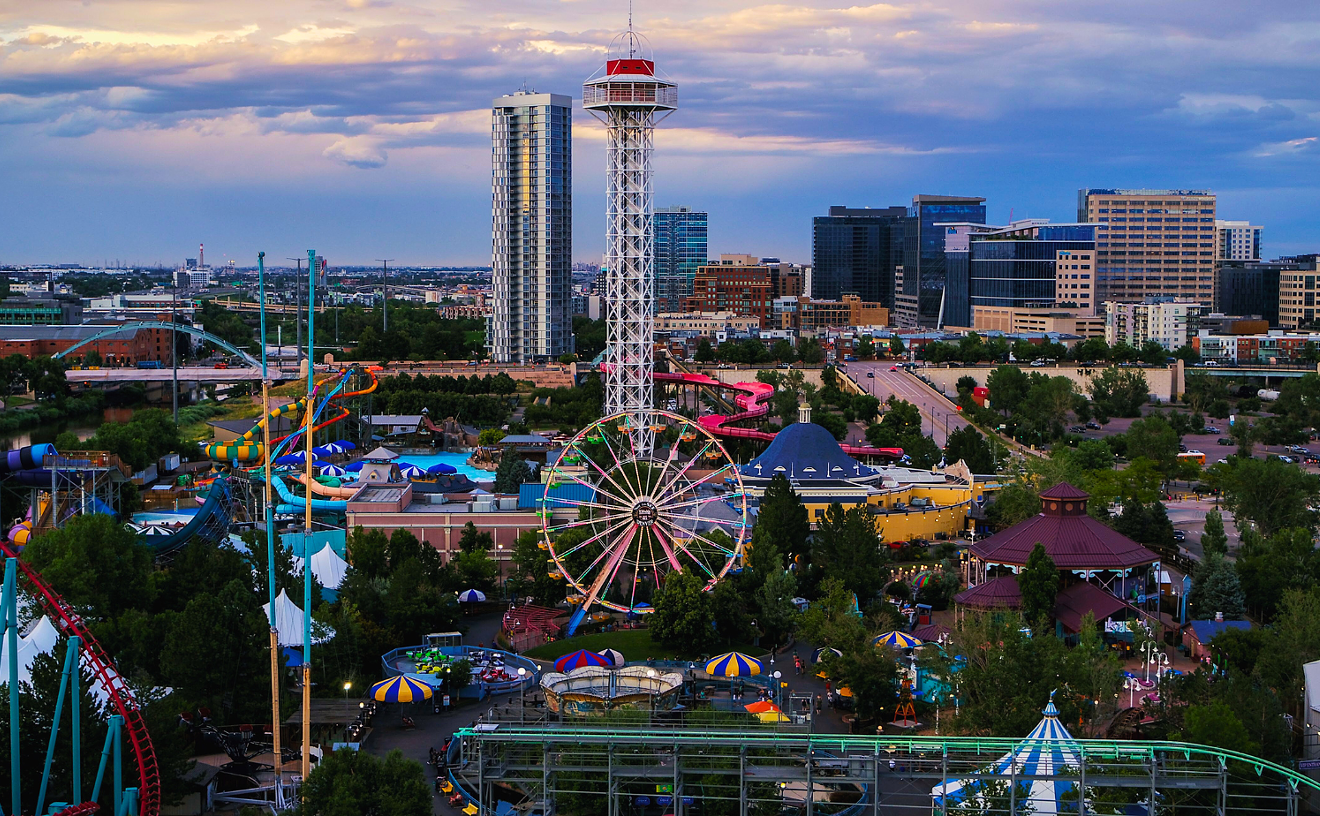It was an incredibly stimulating period for the Denver art scene, and Friedman was a big reason why. Although he made much of his living in art restoration, for decades his Colorado contemporary works were a favorite among art collectors from all walks of life and income brackets, remembers friend John Cunningham.
Eddie passed away from a rare neurological disease on Sunday, June 5, at the Hospice of St John. His friends will gather at the Gilmore Art Center at 2119 Curtis Street at 5 p.m. Wednesday, June 15, for a "Life Celebration of Artist Ed Friedman." Many will bring their favorite Friedman pieces, to create an impromptu retrospective.
Former Westword art critic Renna Shesso wrote this lyrical bio of Friedman in 2000 for the Savageau Gallery:
"I work with the duality between traditional 'window' space and the integrity of the two-dimensional surface, a synthesis between very contemporary art and image."Classically based and enamored with the subtleties of color, scenes painted by Edwin H. Friedman haunt the viewer not simply for how they look but for how they feel as well. Endless fields of vibrant flowers, sunrises that set the sky ablaze, bright fish flickering through dark water -- these scenes are invigorated by Friedman's strong, straightforward composition, his exquisite line quality and his intoxicating sense of color.
Born in Los Angeles in 1948, Friedman received his training at the Art Center College of Design in that city, taking a 1971 BFA in Fine Arts with a concentration in Painting. The Art Center's educational approach was very fundamental: Emphasis was on learning traditional techniques with the materials and on accurately portraying what one saw. Entire days were devoted to drawing a head, a hand, a full human figure. Color theory -- the chemistry of pigments, how the eye perceives hue, how colors work together within a painting, the moods conveyed by color -- was another vital area of Friedman's studies. Taught along with these skills was a highly disciplined working style.
With the solid foundation gained at the Art Center, Friedman moved to Colorado in 1975 and established his own studio, first working in art restoration, then gradually beginning to create original works. For a time he concentrated on portraiture and female nudes, but that interest has largely given way to images of land and sea, flowering fields and the beautiful Japanese carp known as koi.
In all of these subjects, the artist's knowledge and love of color find rich expression. In the paintings he refers to as "flower fields," stylized blooms sweep forward to fill the paintings, from the distant horizon line to the extreme fore ground. This bold treatment of space within the painting has the visual effect of bringing the blossoms right into the hands of the viewer: We're caught up in the forward-rushing sense of perspective.
In his landscapes, Friedman often draws inspiration from the San Juan range of southern Colorado and from the high plains and mountains in the area around Taos, New Mexico. He rarely makes sketches, but may photograph a sunrise or sunset as a means of capturing specific details of land, sky and color. Once back in the studio, the photographic and remembered images are painted directly to the board, with no preliminary drawing, using brushes and palette knives.
Friedman's portrayals of koi -- often inspired by the ponds at the Denver Botanic Gardens -- express a similar spontaneity. Composition in the koi paintings is almost abstract. We clearly see that these are fish, but at first glance what dominates is the swirl of bright color, as changeable and fluid as the aquatic subjects themselves. As we look a bit closer, we recognize the angled bodies in motion, the flash of reflected sun on water, the secretive green-browns that signal hidden depths. Some fish are barely visible in the darker waters, while others are so close we expect them to splash us. Glaze coats of transparent yellows and blues, applied and then selectively wiped away, contribute both surface and depth to this "water." While the outcome is as fresh as rippling water, the method is classical.
Friedman has been described as "fearless in the application of paint." The viewer is immediately aware of the boldly applied impasto areas, where color is laid on in layers, in strokes, in sweeps. It is in these areas that Friedman's superb brush- and knife work and line quality appear most dramatically. Meanwhile, transparent glazes influence the final work quietly, their visual impact occurring almost subconsciously. Always, Ed Friedman glories in color. In one breath, he cites painters as diverse as Vermeer and Mark Rothko as inspirations -- "Philosophically, I'm not trendy," he states, "I believe in classicism" -- while in the next breath he mentions the efficacy of solitary bike rides for triggering breakthrough color realizations.
With both landscape and koi pond, Friedman returns repeatedly to favorite vistas, trying new variations, new interpretations, varying the scale. Just as the same landscape changes through the course of a day as weather and light are altered, just as a fish pond changes constantly with the fluid motion of its inhabitants, the painted expression shifts with each new treatment. An alteration in color, the subtle or dynamic energy of a brush stroke, and Ed Friedman's scenes are born anew.
For a last look at many of those scenes -- and to say goodbye to Friedman -- be at the Gilmore Art Center at 5 p.m. Wednesday (and BYOB).











